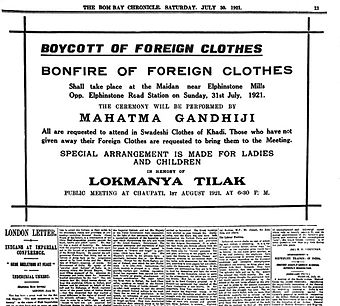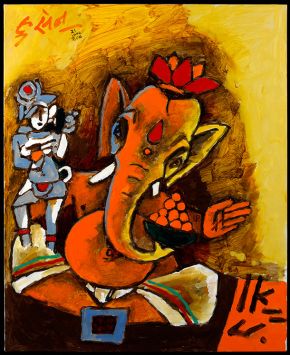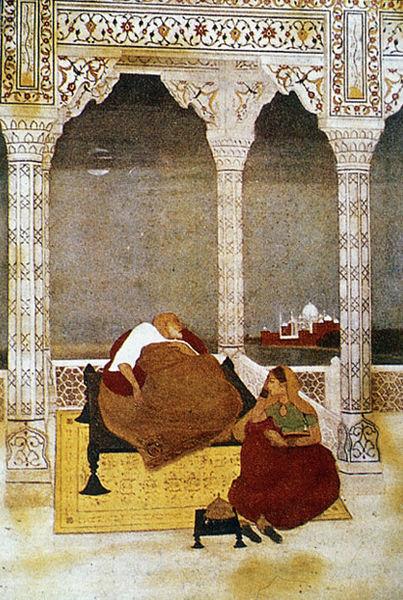PRE-INDEPENDENCE
The art of India is a vital cultural expression of India. It is intertwined with assertions of nationalism, the equation of modernisation and westernisation, and a desire to preserve the cultural heritage of India.
In 1905, the same time around which Art Nouveau was prevalent, the 'Swadeshi Movement' or the Boycott Movement began in India. This movement rose due to the proposal of the partition of Bengal. This phase was marked by a series of protests, petitions and even boycott of anything from the West. Indians used only goods made in India. They burnt anything that was imported. Although it started off as a Political Movement, it had an economic impact on India as well.
The first notable movement in India's art scene was initiated by the `Bengal School' also known as the ‘Bengal Renaissance’. This was a time of cultural flamboyancy and religious revivalism that had influenced the artistic sensibilities of the entire country. Stirred by Abanindranath Tagore and followed by renowned artists like Gaganendranath Tagore, Nandalal Bose, Benodebehari Mookherjee, Mukul Dey, Kshitindranath Mazumdar, Sarada Ukil, M.A.R. Chugtai and Asit Haldar among others this movement had an enduring impact on the Indian art scene. The questioning of the West and the attempt to resuscitate the cultural identity suppressed by the British commenced in early 1900 and took momentum from the on-going Swadeshi movement.
It was interesting to find out that the Boycott Movement happened to be going on in India at the same time as the Art Nouveau period. Because I wanted to make a typeface for both English and Hindi, I thought it was relevant to see the impact of such movement on my country as well. It was interesting to see that the art movement didn't have much of an impact because of the national state of the country at that time. However, there were a group of artists called "The Bombay Progressive Group."
Founded in the year of Indian independence the group sought to create an Indian form of modernism that celebrated traditional Indian painting while also acknowledging the pioneering developments in art in Europe and America. Ostracised by the Indian art establishment, they staged their own exhibitions and events, aided financially by a group of refugees from war-torn Europe, in particular, the expressionist painter Walter Langhammer. The founder members were K.H. Ara, M. F. Husain, S. H. Raza and F. N. Souza with S. K Bakre, H.K Gade, Krishen Khanna and V.S. Gaitonde joining later.
I used this research to present the initial designs of my typeface. I designed my typeface and used the word "boycott" (inspired by this research) to showcase the typeface.
Boycott Movement Poster

Boycott Movement News Article

'Bharat Mata' by Abanindranath Tagore

Bharat Mata (Mother India), depicted a young woman, portrayed with four arms in the manner of Hindu deities, holding objects symbolic of India's national aspirations.
'Ganesha' by M. F. Hussain

Passing of Shah Jahan by Abanindranath Tagore

Painted in a Mughal Style
Nude by Francis Newton Souza
'Dhruva' by Asit Halder, published in Myths of the Hindus & Buddhists (1914).

Rajasthan by Syed Haider Raza
SOURCE
Books referred:
ICSE History and Civics Book X - Ratna Sager
Websites:
https://en.wikipedia.org/wiki/Swadeshi_movement
https://www.mojarto.com/blogs/the-bengal-renaissance-resuscitating-the-identity-of-india-art
http://www.britishempire.co.uk/maproom/india/artandnationalism.htm
http://www.tate.org.uk/art/art-terms/b/bombay-progressive-artists-group
